Topic 5: Mix Questions
You have an Azure Active Directory (Azure AD) tenant named contoso.com.
You have a CSV file that contains the names and email addresses of 500 external users.
You need to create a quest user account in contoso.com for each of the 500 external users.
Solution: from Azure AD in the Azure portal, you use the Bulk create user operation.
Does this meet the goal?
A.
Yes
B.
No
No
Explanation:
"Bulk Create" is for new Azure AD Users.
For Guests:
- Use "Bulk invite users" to prepare a comma-separated value (.csv) file with the user information and invitation preferences
- Upload the .csv file to Azure AD
- Verify the users were added to the directory
You have two Azure App Service apps named App1 and App2. Each app has a production deployment slot and a test deployment slot. The Backup Configuration settings for the production slots are shown in the following table.
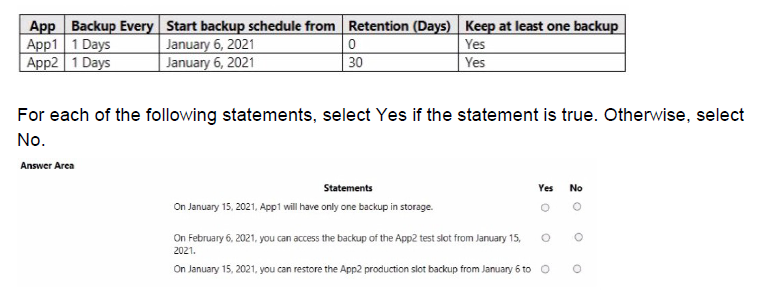
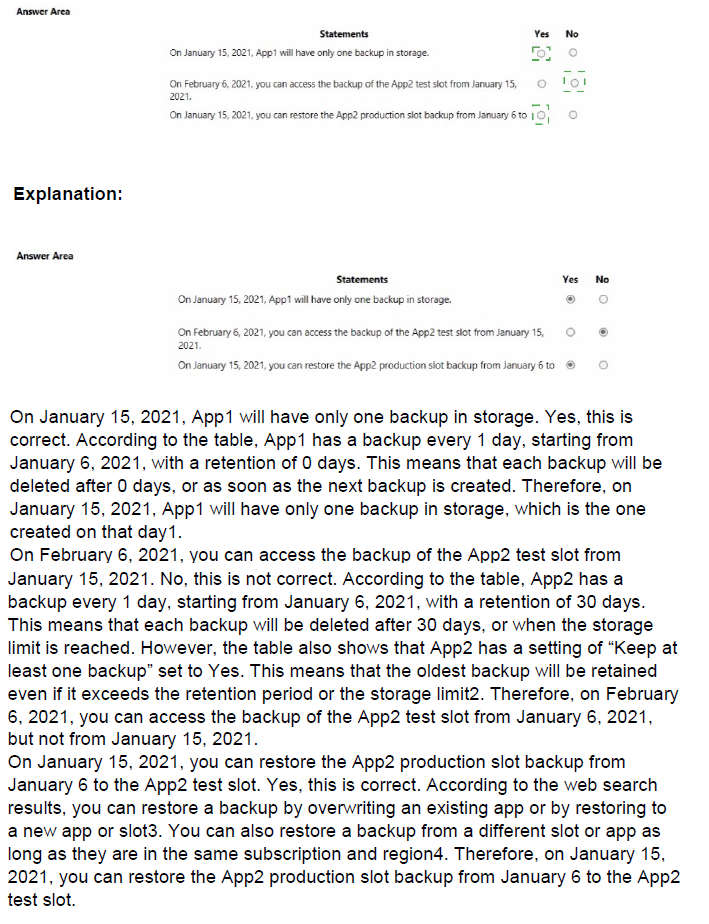
You create an Azure Storage account named Contoso storage.
You plan to create a file share named data.
Users need to map a drive to the data file share from home computers that run Windows 10.
Which outbound port should be open between the home computers and the data file share?
A.
80
B.
443
C.
445
D.
3389
445
Explanation:
Ensure port 445 is open: The SMB protocol requires TCP port 445 to be open; connections will fail if port 445 is blocked.
You have an Azure subscription that contains The storage accounts shown in the following table.

You deploy a web app named Appl to the West US Azure region.
You need to back up Appl. The solution must minimize costs.
Which storage account should you use as the target for the backup?
A.
storage1
B.
storage2
C.
storage3
D.
storage4
storage1
Explanation:
To back up a web app, you need to configure a custom backup that specifies a storage account and a container as the target for the backup1. The storage account must be in the same subscription as the web app, and the container must be accessible by the web app2.
The backup size is limited to 10 GB, and the backup frequency can be configured to minimize costs.
According to the table, storage1 is the only storage account that meets these requirements.
Storage1 is in the same subscription and region as the web app, and it is a generalpurpose v2 account that supports custom backups. Storage2 and storage3 are in a different region than the web app, which may incur additional costs for data transfer.
Storage4 is a FilesStorage account, which does not support custom backups.
Therefore, you should use storage1 as the target for the backup of your web app. To configure a custom backup, you can follow these steps:
In your app management page in the Azure portal, in the left menu, select Backups.
At the top of the Backups page, select Configure custom backups.
In Storage account, select storage1. Do the same with Container.
Specify the backup frequency, retention period, and database settings as needed.
Click Configure.
At the top of the Backups page, select Backup Now.
You plan to use Azure Network Watcher to perform the following tasks:
Task1: Identify a security rule that prevents a network packet from reaching an Azure virtual machine
Task2: Validate outbound connectivity from an Azure virtual machine to an external host
Which feature should you use for each task? To answer, select the appropriate options in the answer area.
NOTE: Each correct selection is worth one point.
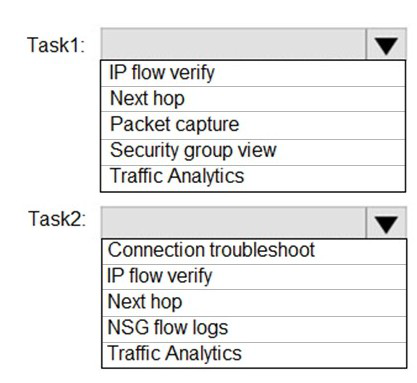
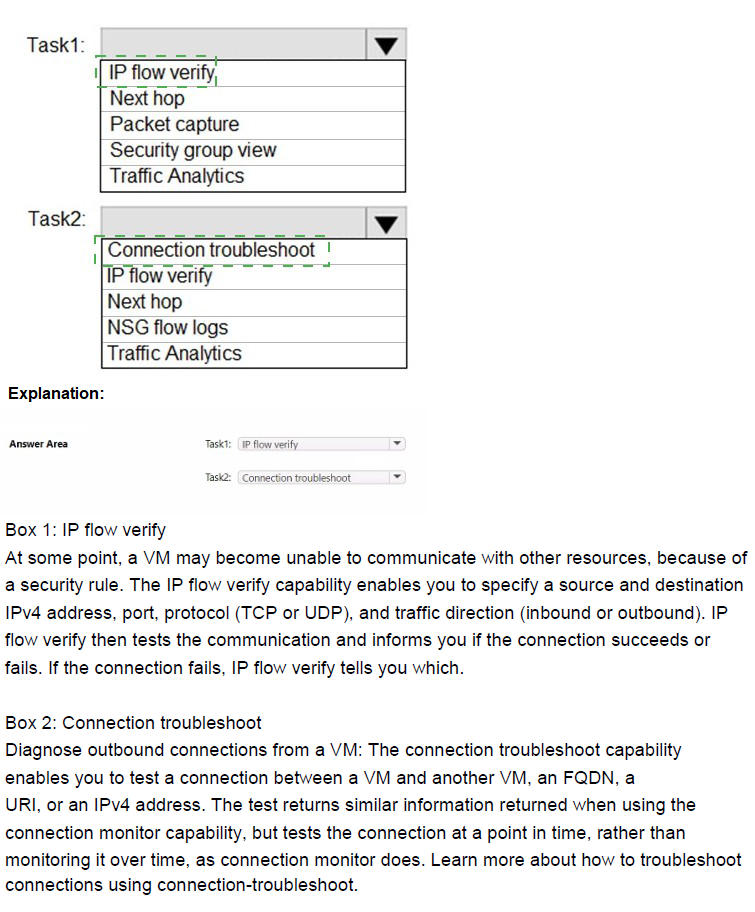
You have an Azure subscription that contains the virtual networks shown in the following table.
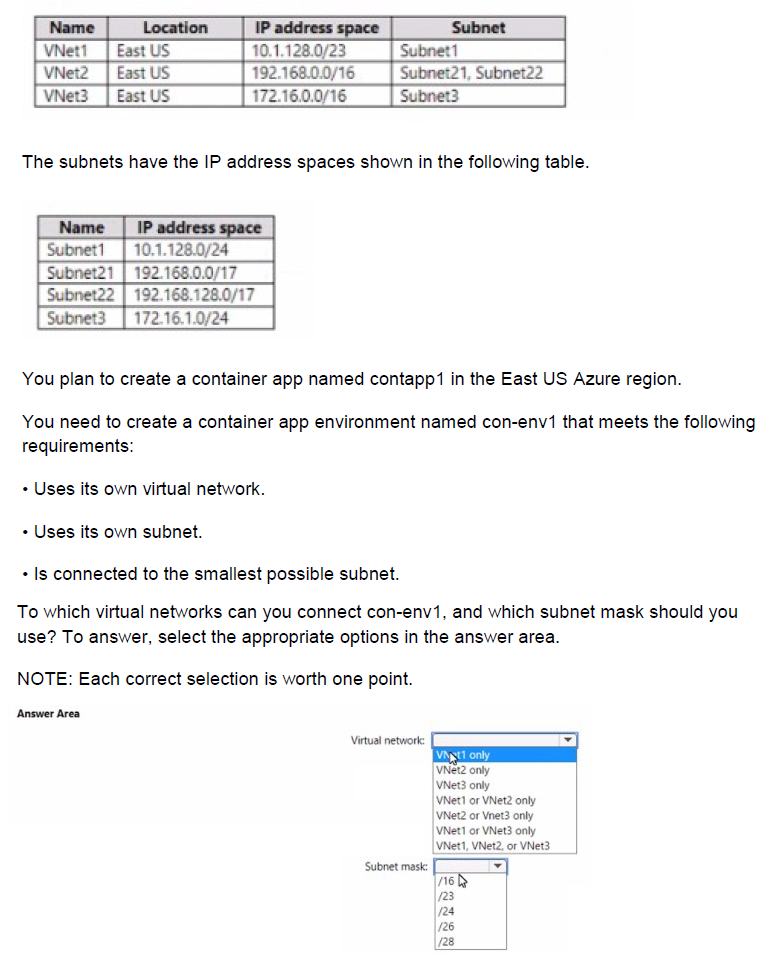
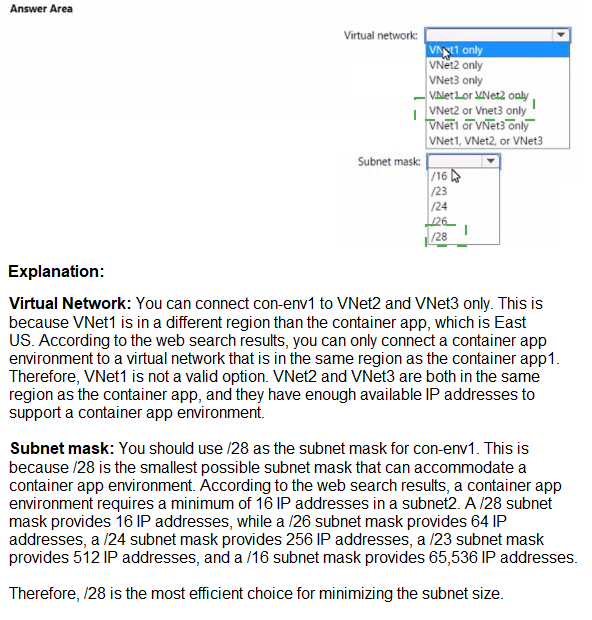
You have an Azure subscription that contains a virtual machine named VM1.
You plan to deploy an Azure Monitor alert rule that will trigger an alert when CPU usage on VM1 exceeds 80 percent.
You need to ensure that the alert rule sends an email message to two users named User1 and User2.
What should you create for Azure Monitor?
A.
an action group
B.
a mail-enabled security group
C.
a distribution group
D.
a Microsoft 365 group
an action group
Explanation:
An action group is a collection of notification preferences that can be used by Azure Monitor to send alerts to users or groups when an alert rule is triggered. An action group can include email recipients, SMS recipients, voice call recipients, webhook URLs, Azure functions, Logic Apps, and more. To send an email message to two users named User1 and User2 when CPU usage on VM1 exceeds 80 percent, you need to create an action group that contains their email addresses and associate it with the alert rule.
References:
Create and manage action groups in the Azure portal
Create, view, and manage Metric alerts using Azure Monitor
Your on-premises network contains a VPN gateway.
You have an Azure subscription that contains the resources shown in the following table.

You need to ensure that all the traffic from VM1 to storage! travels across the Microsoft backbone network.
What should you configure?
A.
private endpoints
B.
Azure Firewall
C.
Azure AD Application Proxy
D.
Azure Peering Service
Azure Firewall
Explanation:
Per the MS documentation, private endpoint seems to be the proper choice: "You can use private endpoints for your Azure Storage accounts to allow clients on a virtual network (VNet) to securely access data over a Private Link. The private endpoint uses a separate IP address from the VNet address space for each storage account service. Network traffic between the clients on the VNet and the storage account traverses over the VNet and a private link on the Microsoft backbone network, eliminating exposure from the public internet." Link: https://learn.microsoft.com/en-us/azure/storage/common/storage-privateendpoints
You have an Azure subscription that contains the virtual machines shown in the following table.
You deploy a load balancer that has the following configurations:
• Name: LB 1
• Type: Internal
• SKU: Standard
• Virtual network: VNET1
You need to ensure that you can add VM1 and VM2 to the backend pool of L81.
Solution: You create two Standard SKU public IP addresses and associate a Standard SKU public IP address to the network interface of each virtual machine.
Does this meet the goal?
A.
Yes
B.
No
Yes
You have an Azure subscription that contains an Azure Availability Set named WEBPRODAS-USE2 as shown in the following exhibit.
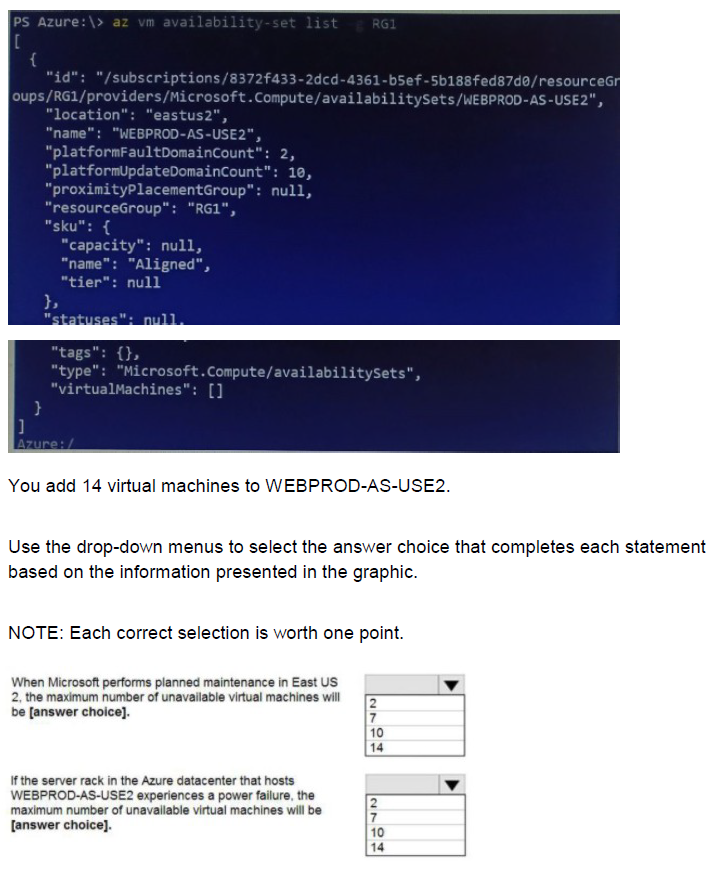
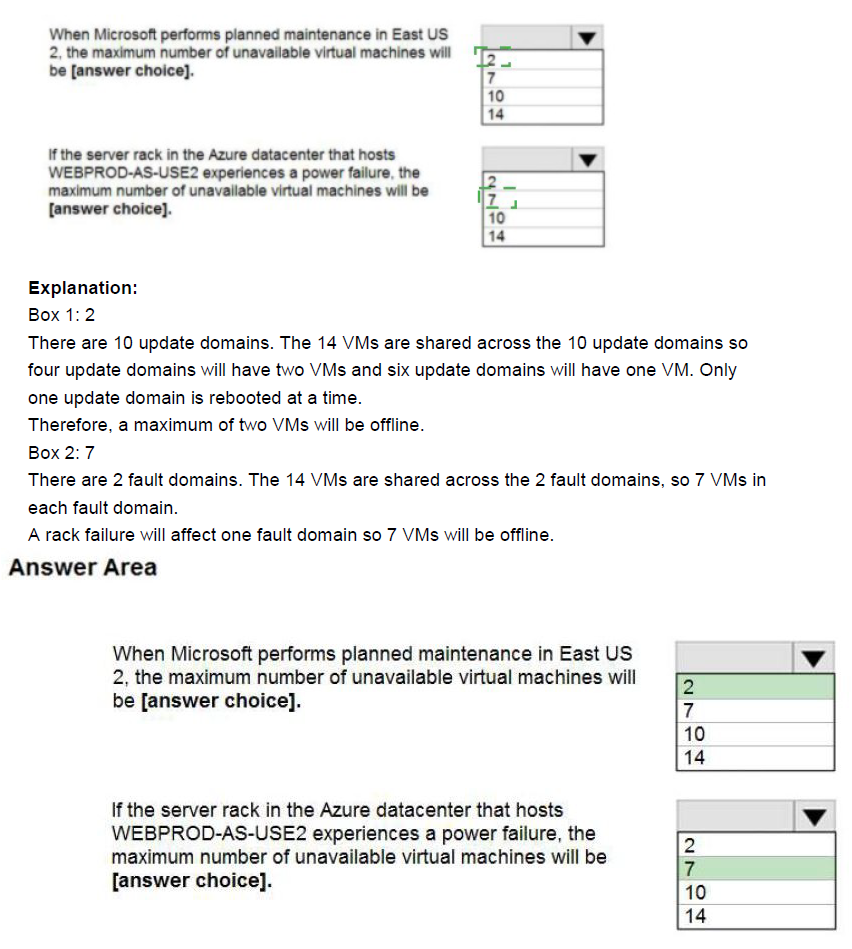
| Page 4 out of 32 Pages |
| Previous |